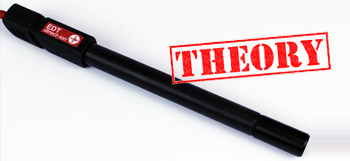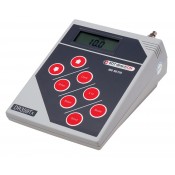Methods of Analysis by ISE
Unlike a pH electrode an ISE is not just dipped into a solution and a direct readout obtained. There are several ways to get the right result and this will often depend on the type of sample and the environment the sample is located in. This article will guide you to selecting the method that suits your application.
Methods Of Analysis Using Ion Selective Electrodes (ISE)
The most common technique is Direct Potentiometry. Here the ISE is used to create a Calibration using two or three standard solutions and reading an unknown sample directly. A very simple measurement if you have an Ion meter with a direct concentration mode such as the DR359Tx Ion Meter.
What if the sample matrix is completely different to the standards? Is the result still valid?
Both Standards will be aqueous preparations and the Ionic strength can be corrected for by addition of ISAB. This however is not sufficient if the sample Matrix is significantly different e.g. In Wine where the Alcohol content will produce a potential of its own. Or viscous solutions where ionic mobility is compromised thereby reducing individual ionic activity.
In such cases we require the use of incremental techniques.
It is easy to be put off using these techniques just by looking at the calculations. Don’t be!! They are the simplest measurements to make in a practical sense and a result is produced by taking just two readings. Furthermore you don’t need an Ion Meter!!
Known Addition (Standard Addition).
Using a combination ISE and a pH meter with a mV mode (+/-0.1mV) such as the FE257 pH meter read the potential of a known volume of the sample solution. Add a known much smaller volume of standard solution, stir well and read the new potential. The difference between the two results will enable you to calculate the unknown concentration using the following equation:
Cu = Cs x [Vs/(Vu + Vs)] / [(10{(E2-E1)/ˢ}) - (Vu/(Vu + Vs))]
Where: Cu = Concentration of the sample.
Cs = Concentration of the standard.
Vs = volume of the standard.
Vu = volume of the sample
E1 = Electrode potential (mV) of the Sample.
E2 = Electrode potential after the Standard addition.
ˢ = the electrode slope.
On a practical level it is very simple to standardise the method so that the same volume of standard and sample are always used e.g. 50ml of Sample and 5 ml of Standard. The equation can therefore be simplified and reduced to a parabolic curve of F (Factor) against ∆E (E2-E1). Here the Concentration of the Standard is simply multiplied by a factor F to give you the concentration of the sample.
Cu = FCs.
You can produce then a standard addition table to make life easy for yourself:
Standard Addition Table:
| ∆ E (mV) | Factor | ∆ E (mV) | Factor |
| 1 | 1 | 11 | 0.16 |
| 2 | 0.696 | 12 | 0.145 |
| 3 | 0.529 | 13 | 0.133 |
| 4 | 0.423 | 14 | 0.121 |
| 5 | 0.351 | 15 | 0.112 |
| 6 | 0.297 | 16 | 0.103 |
| 7 | 0.257 | 17 | 0.0884 |
| 8 | 0.225 | 18 | 0.0822 |
| 9 | 0.199 | 19 | 0.0767 |
| 10 | 0.178 | 20 | 0.0716 |
Assumes a monovalent Ion with a perfect slope. Assumes a 10ml addition to a 100ml sample.
Example:
If you were determining the concentration of Sodium in Orange Juice for example all you need do is place the Sodium Combination ISE into 100ml of Orange Juice and read mV1. Add 10ml of a 1000 ppm Sodium Standard and read mV2.
Say ∆E (mV2-mV1) was 10mV then.
Concentration of Na in the Juice is 1000ppm x 0.178 = 178ppm


